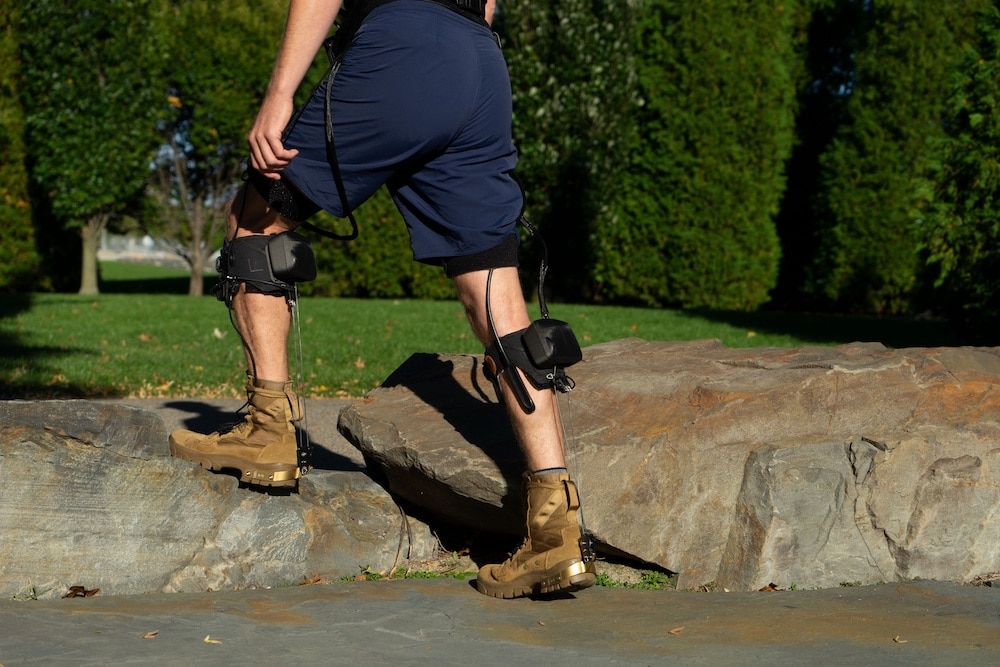Create a free profile to get unlimited access to exclusive videos, sweepstakes, and more!
When building the perfect exosuit, one size doesn’t fit all
Better. Faster. Stronger.

Tony Stark might have been able to design a fully functional exosuit in a cave with a box of scraps, but in the real world the process is slower going. Basic exosuits have a consistent level of power irrespective of the user, or else they need to be manually adjusted to give the user the level of power they desire. Think Ripley’s Work Loader from Alien, good for punching xenomorphs, not so great for real-time customized response.
Scientists have been working for years to develop exosuit systems which are customizable to the user and are capable of real-time response, based on the individual’s physiology and the specific task they are undertaking. A recent study carried out by Richard Nuckols from the John A. Paulson School of Engineering and Applied Sciences at Harvard, and colleagues, illustrates one way this could be accomplished. Their findings were published in the journal Science Robotics.
“In the past, a lot of the testing has been done in the lab under fixed situations, like fixed-speed walking,” Nuckols told SYFY WIRE. “As people go outside, we might want to change speeds or go for a hike. In order to get these onto people and not have to go through all the training and optimization, we took a bio-inspired approach.”
This new system takes direct measurement of the muscles via an ultrasound probe attached to the calf. The system then takes those measurements, analyzes them to build a support profile, and applies the appropriate level of support. In both laboratory and real-world studies, this strategy resulted in a system which is capable of dynamically changing the way it operates depending on the real-time needs of the wearer.
“The idea is, somebody could just put this on, we take some quick measurements of what their muscle is doing, and they can start walking right away. If they start doing something different, it adapts with them,” Nuckols said.
The suit has a number of parts which work together to generate force on the legs. An arm attached to the foot connects to a cable which runs to a motor. Once the probe has enough data to generate a force profile, the motor pulls on the cable which applies force to the foot, alleviating some of the energy cost needed to walk or climb an incline.
Measurements of metabolic costs with and without the suit showed a decrease in cost between 7.8% and 15.9% depending on the task — the speed of a person’s walking gait or the incline upon which they were traveling. Those numbers might not seem significant on the surface, but the purpose of this suit is intended to be more like a spotter at the gym, helping to carry a little bit of the load when needed, rather than carrying the entire load all on its own. It’s possible those numbers could push even higher in the future, but that may not be desirable.
“A lot of people are trying to maximize these numbers. What we’re trying to do is apply enough force that we could offset the most inefficient portion of force generation from the ankle, which is when the muscle is producing that positive torque. You can probably apply more force, but at that point it starts to become uncomfortable. You can also start to apply assistance across multiple joints, not just the ankle but the knee and the hip. We don’t have to replace everything, we just have to replace that inefficient portion of it,” Nuckols said.
At present, the system works pretty quickly to adapt to changes in a person’s gait or activity, but there is room for improvement. The major hurdle is the processing time between real-time ultrasound measurements and the force profile update.
“When we did the outdoor study, we used five seconds of data for an update. Five strides. Then there was a little bit of processing time. Ten to fifteen seconds is what it took to update the profile for that demonstration. You could do it faster, theoretically you could do it within one stride. There’s some technical work that could be done to speed up that processing time, it just wasn’t our primary goal,” Nuckols said.
The goal was to show the suit’s ability to update dynamically in a real-world scenario where a user might go from slow walking to a faster gait, or encounter variances in incline. In that respect, it was a success. For the outdoor study, users didn’t do any advanced profile mapping. Instead, the system was expected to gather data and adjust to the needs in close to real-time.
As it stands today, this exosuit system is well adapted for use in recreational or occupational settings, assisting users on a hike or to carry heavy objects. The team is now working to adapt the system for use in clinical settings for users who might have less consistent gaits and who would benefit from assistance without the need for long-term advanced data.
“That’s really the next stage of it, is figuring out how to apply these to individuals who would really benefit from strategies like this. Being able to get to a place where they don’t have to walk for an hour for us to understand what assistance should look like. If we could get it on them and start helping them as soon as possible that would be the goal.”
These systems aren’t yet perfect, they could be streamlined to act more quickly and across a larger variety of physiologies and activities, but humans sometimes forget why they walked into a room, so maybe we should cut our robot assistants some slack.


























